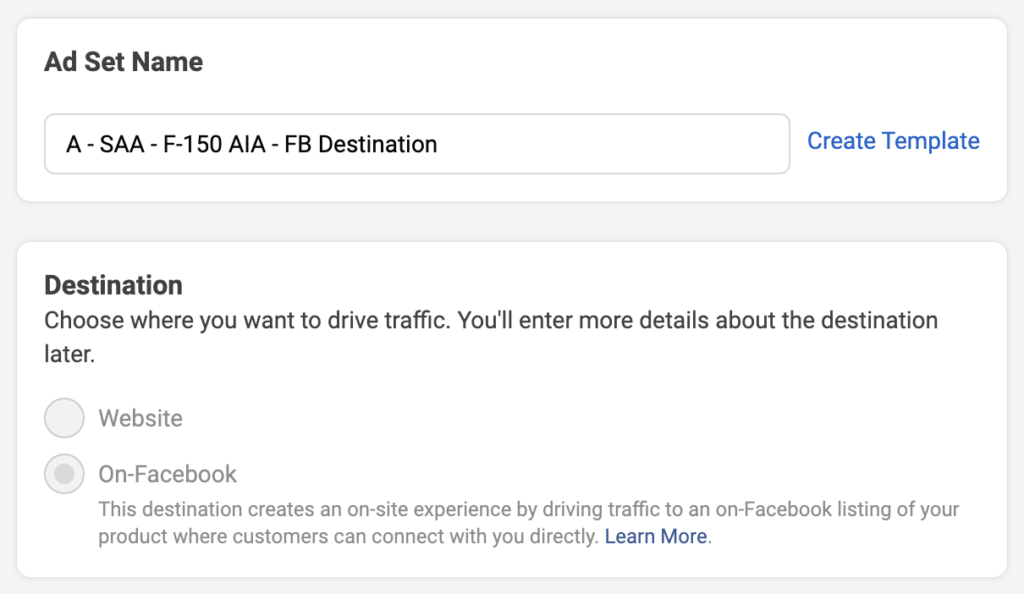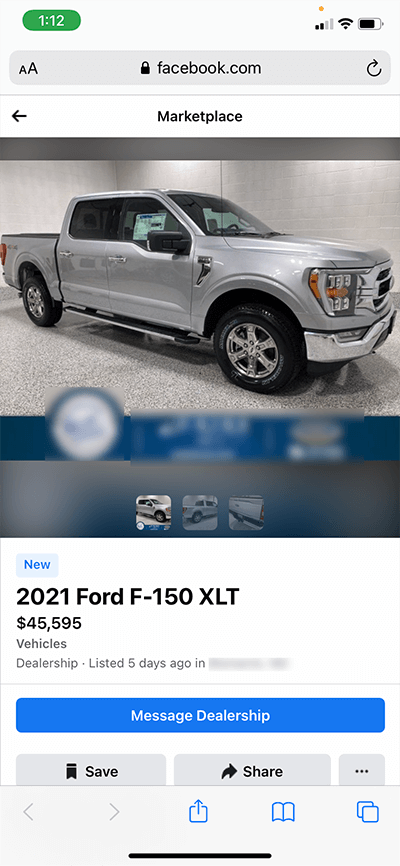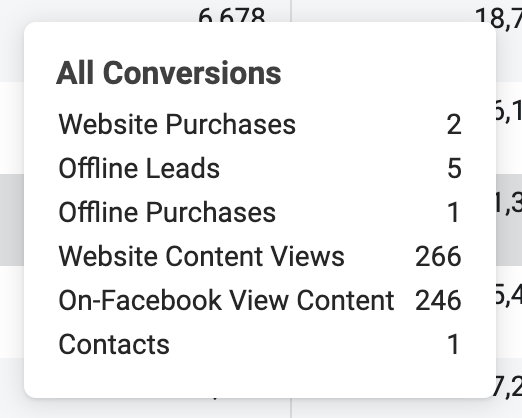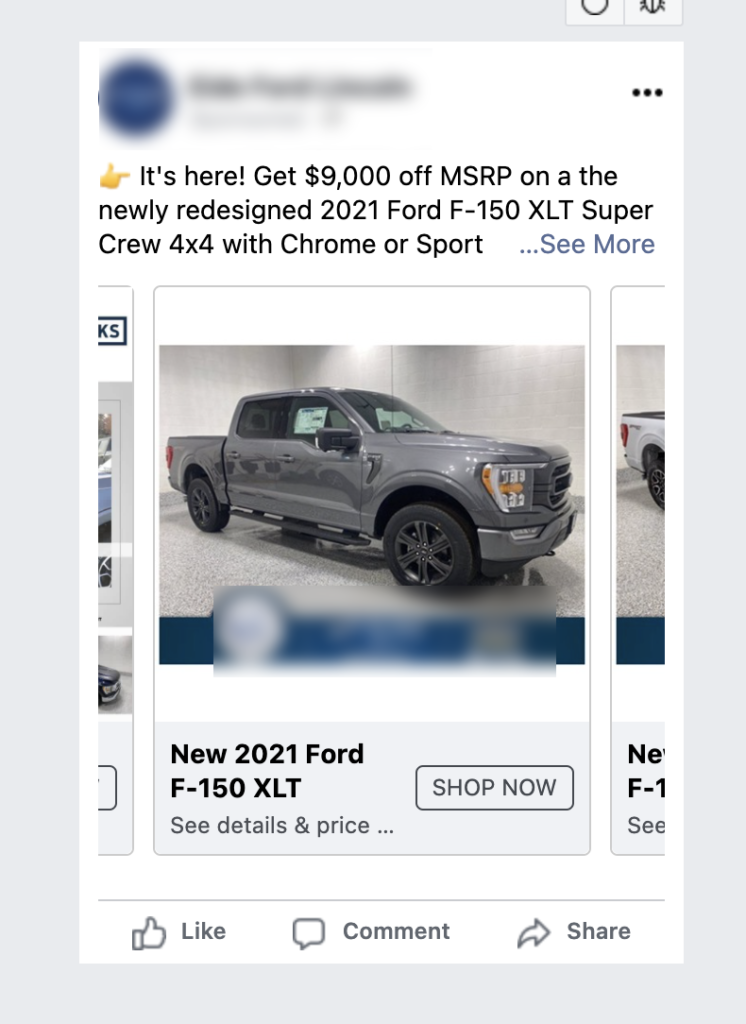![[Test Results] The On-Facebook Destination for Dealership Facebook Ads](https://9clouds.com/wp-content/uploads/2021/02/on-facebook-destination-for-automotive-ads.png)
[Test Results] The On-Facebook Destination for Dealership Facebook Ads
Instead of linking to your website, your dealership’s Facebook ads can now show vehicle detail pages right on Facebook.
Facebook quietly rolled out this “on-Facebook destination” in September 2020, and it’s a game changer for dealerships who:
- Have their inventory in an automotive (AIA) catalog on Facebook
- Have dysfunctions with their website or Facebook pixels
- Want to get more reach and engagement on their inventory ads
- Are concerned about iOS 14 restrictions
The 9 Clouds team has been testing this feature since November, and we’re excited to share the tips and insights with you here.
What is the Automotive On-Facebook Destination?
When automotive dealerships create campaigns on Facebook, they can choose whether to send their ad clickers to the vehicle’s detail page (VDP) on Facebook or on their website.

When they choose the on-Facebook destination, dealers can prospect leads in real-time – something that Facebook touts as a “frictionless experience.”
In clearer terms: this on-Facebook destination is good because the audience is already familiar with the Facebook app, and can choose to message the dealership or call directly from the on-Facebook VDP.

It’s important to note that, although these on-Facebook VDPs are made to appear as Marketplace listings (see screenshot above), they’re not technically on Marketplace.
It’s clear that Facebook is introducing this feature to give dealers more ways to reach their core audiences and drive conversions from their ads. This is especially important when companies like Apple begin to restrict the use of website pixels.
According to Facebook, here are the main benefits of using AIA on-Facebook destination in dealership ads:
- If your dealership has a bad website. It’s as plain as that.
- If you don’t have a pixel installed on your website. (9 Clouds can help you with this, by the way.)
- If you want higher quality leads from Facebook ads. Basically, Facebook is saying that you can qualify leads in real time by chatting with shoppers in Facebook Messenger via the on-Facebook VDPs. This promise of “higher quality” is a stretch, but it is a really good option for dealers who are able to respond to Facebook messages quickly.
- If you want to reach more in-market shoppers. This increase in reach is something we confirmed with our own testing. Keep reading!
Of course, we all have to take these benefits with a spoonful of skepticism. Facebook has a history of bloating their own statistics and mis-managing data.
Because the on-Facebook destination is, well, entirely on Facebook, the absence of website analytics data will bring Facebook’s reporting even further into question.
Before you switch all of your dealership’s Facebook campaigns to the on-Facebook destination, do some testing of your own.
Do On-Facebook VDP Ads Work?
In November and December 2020, our team tested the on-Facebook destination for two traffic campaigns on Facebook.
In November, we pitted the on-Facebook ads against a conventional traffic campaign for one of the dealership’s models (in this case, new Ford Explorers).
In one month, the on-Facebook destination reached 41,380 people, while the conventional (click-to-website) ads reached 26,114. Additionally, the on-Facebook ads resulted in 512 “content views” which are the Facebook equivalent of VDP views. The normal ads resulted in 415 website VDP views.
At face value, these results seem to show that Facebook clearly favors keeping people on Facebook. However, we found that the 512 “content views” reported by Facebook actually included 246 on-Facebook VDP views plus 266 VDP views that happened on the website after the viewer clicked the “view on website” link on the on-Facebook VDP.

Why the disconnect? The on-Facebook VDP strips away any UTM tracking. This means that the people who click your ad, open the on-Facebook VDP, and then click the link to go from your on-Facebook VDP to your website will not be visible within the campaign in Google Analytics.
So, while on-Facebook yields more total VDP views, it’s important to note that the VDP views on Facebook and the VDP views on the website are not mutually exclusive.
In the following month, we found similar results with the same test with a different Ford SUV model. The on-Facebook destination had 53.6% more reach and 34.3% more VDP views. Out of the 897 VDP views from the on-Facebook ads, 366 were on-Facebook VDPs, from which 531 additional VDP views happened on the website.

This example screenshot from Google Analytics shows the obvious increase in VDP views resulting from the traffic from our ads that used the on-Facebook destination. Because people can easily click from the on-Facebook VDP to the VDP on your website, “on-Facebook” doesn’t mean only on-Facebook!
So, even if you aim to keep people on Facebook, they will still click through the VDP to visit your website. That’s why it’s important to keep an eye on the “Views Content” in Facebook Ads manager, and the organic referral traffic from Facebook in your Google Analytics.
What Else Should You Know About the On-Facebook Destination?
Aside from the issues in Google Analytics, there are a few things we want to warn you about:
- Carousels Only: First, the on-Facebook destination is only compatible with the carousel or single-image format.
- The Images Crop Differently: Curiously, the images in your on-Facebook carousels will show in whole instead of being cropped to fill the square frame (see below).

- AIA Catalogs Required: Auto dealerships who want to try using the on-Facebook destination first need to create an Automotive Inventory Ads (AIA) product catalog on Facebook. As opposed to the conventional catalog, AIA is formatted specifically for vehicle data, and thus has all of the necessary data with which Facebook can generate the on-Facebook VDP.
- No Phone Call Stats: As with all Facebook ads, there is no way to accurately report the actual number of phone calls that come directly from the on-Facebook destination.
- Attribution is Tricky: One limitation that we ran into with our testing was that we weren’t able to see which ads (on-Facebook or click-to-website) drove more offline sales and leads. Because of Facebook’s last-touch attribution model, only the most recently-seen ad gets credit for the offline lead or sale. In our case, that is usually the dynamic retargeting campaigns that we run for many dealerships. For that reason, we recommend setting up a unique offline event set just for the on-Facebook destination.
Despite these limitations, the data from our tests was promising. And, the pixel targeting restrictions in iOS 14 make this on-Facebook destination even more attractive.
Does Your Dealership Need Facebook Help?
9 Clouds has launched thousands of Facebook ads for dealerships throughout North America, and we’re constantly testing new aspects of the platform.
If you’d like to learn more about Facebook advertising for auto dealers, check out the other free resources and case studies on our site.
Drive More Revenue »





